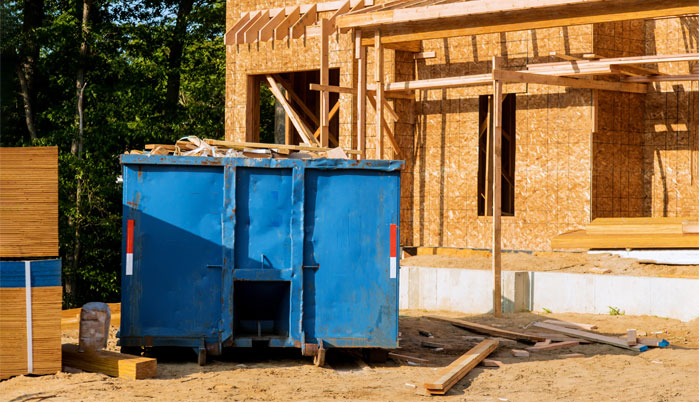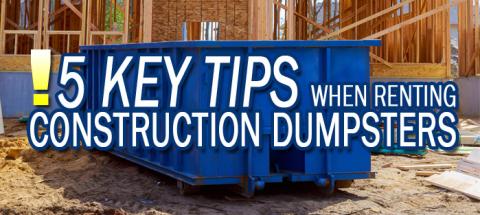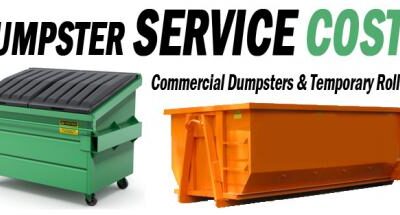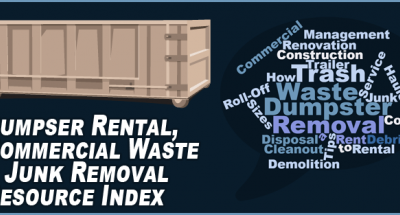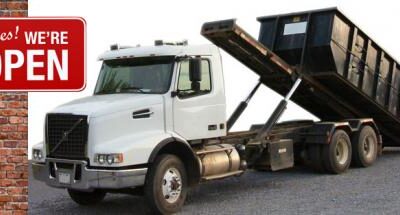Construction Debris Disposal Guide – 5 Key Tips
There are things to keep in mind when disposing of construction debris, such as wood, drywall, flooring, roofing, and insulation. Avoid additional fees and overages by keeping in mind the following tips.
1. Plan ahead
It’s easier to plan ahead and choose the correct dumpster size for the job when you know the type and amount of debris that will be (or has been) generated.
For example, concrete debris generally needs to be separated from other types of construction debris. Also, concrete is dense and heavy compared to other materials, like lumber.
Knowing this information will help you and the dumpster rental company choose the ideal roll-off container for the job.
As a general rule:
- Heavy Debris (concrete, shingles, etc.) = Small dumpster (e.g., 10 yard bin)
- Lighter Debris (insulation, dry wood, etc.) = Larger dumpster (e.g., 20, 30, or 40 yarder)
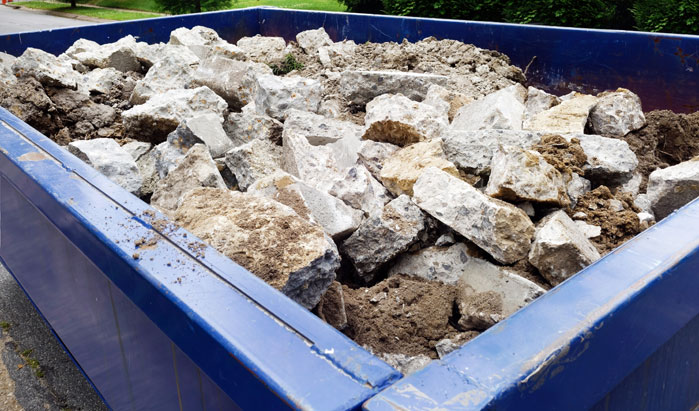
2. Estimate debris volume more accurately
One cubic yard of junk or debris measures 3 ft. x 3 ft. x 3 ft.—approximately the size of a standard kitchen stove.
Think of it this way: Roughly ten kitchen stoves would fit in a 10 yard roll-off dumpster. This may make it easier to visualize which dumpster is right for the project and may make it easier to do the math when figuring out how much debris your project will generate versus how much dumpster capacity you’ll need to accommodate it.
3. Don’t mix construction debris with general wastes
Most municipalities do not allow mixing construction debris into the general waste stream (i.e., household trash).
Avoid using a rented dumpster as a catch-all for construction wastes, trash, yard debris, and other wastes. Mixing these wastes could lead to additional fees or other issues.
If necessary, rent multiple dumpsters to accommodate different types of waste and debris. Depending on the amount of junk you have, hiring a junk removal service to handle some or all of the job may be a more convenient and affordable option.
4. Order a slightly larger container
Another expensive mistake is booking a dumpster that isn’t big enough to finish the cleanup.
Choosing a dumpster that’s too small can lead to more hassle and costs. You’ll have to either order an additional dumpster or pay overage fees for overfilling the dumpster.
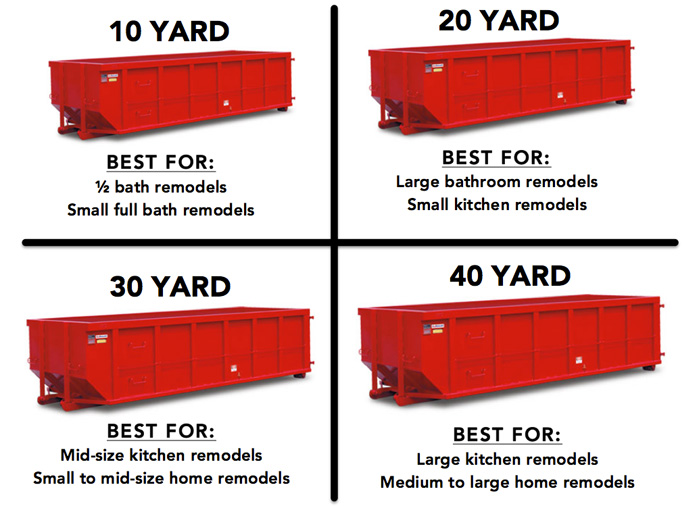
By spending an extra $20 – $50 on averageand going with a larger dumpster, you can avoid these extra costs.
Learn more about how opting for a bigger dumpster can sometimes save money.
5. Plan container swap-outs and pick-ups ahead of time
Ensure the job site runs smoothly by scheduling pick-ups ahead of time. Depending on the rental provider’s schedule, it may be several days before your dumpster can be picked up or swapped out with a new one.
Any delay at a busy construction or demolition site can be problematic. Communicating pick-ups or swap-outs with the rental company ahead of time can greatly reduce slowdowns at the job site.
The key to a successful construction debris cleanup is proper planning and effectively communicating your disposal needs with your roll-off dumpster rental provider. An experienced and reputable rental company will ensure the disposal process for your project runs smoothly.
Start your search for dumpster rental companies near you
